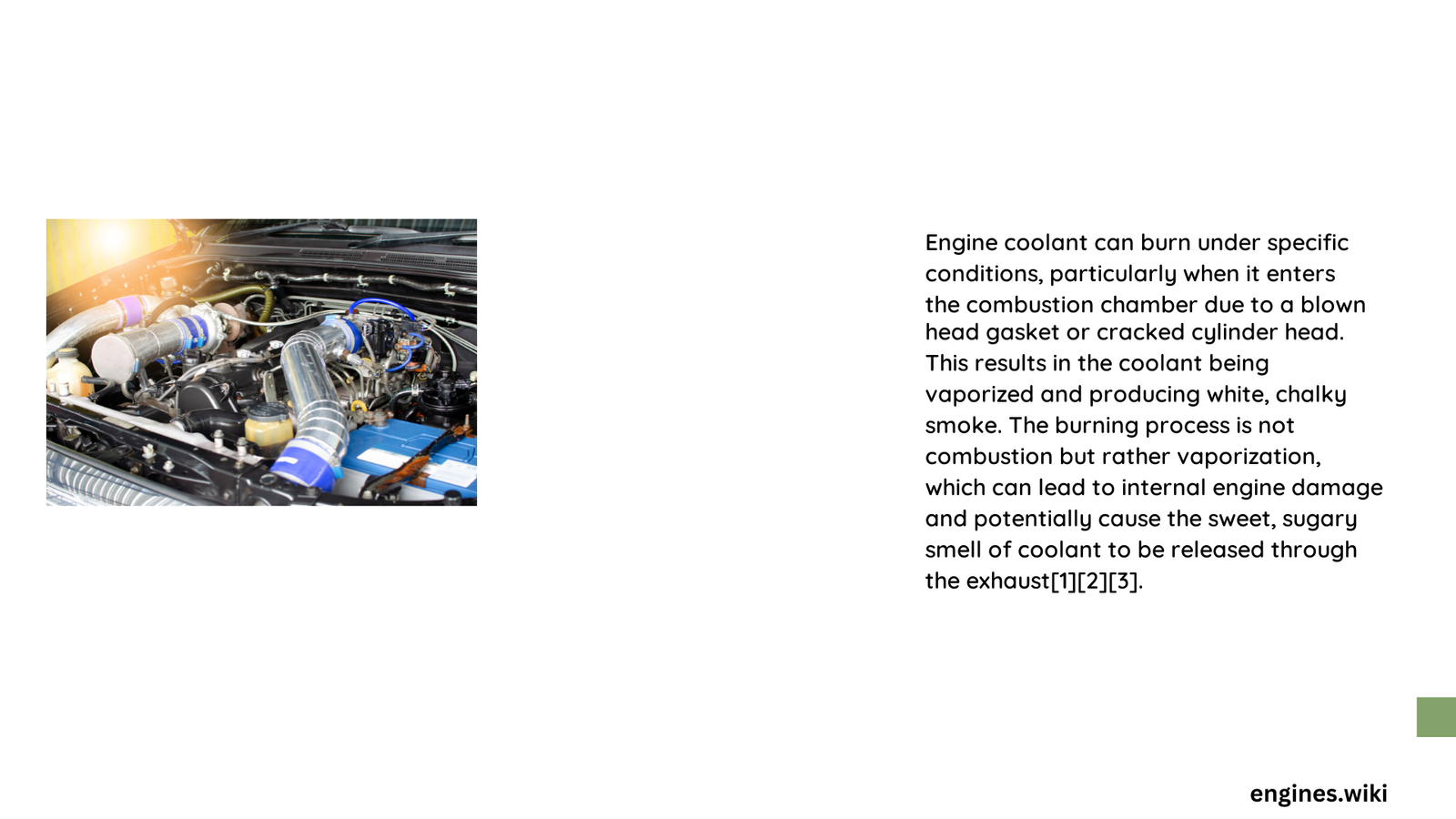Engine coolant can indeed burn under specific high-temperature conditions, particularly when ethylene glycol-based mixtures are exposed to extreme heat and an ignition source. While not inherently flammable in normal operating conditions, coolant can combust at temperatures around 750-1,000°F, with factors like water content and presence of a pilot flame significantly influencing its combustibility.
What Makes Engine Coolant Potentially Combustible?
Chemical Composition of Coolant
Engine coolant typically consists of:
- Ethylene glycol (primary component)
- Water
- Corrosion inhibitors
- Antifoaming agents
| Coolant Component | Combustion Characteristic |
|---|---|
| Ethylene Glycol | Flash Point: ~260°F |
| Water | Reduces combustibility |
| Additives | Varies by chemical composition |
What Temperatures Trigger Coolant Combustion?
Coolant combustion depends on several critical temperature thresholds:
- Flash Point:
- Pure ethylene glycol: 260°F (127°C)
-
50% mixture: Around 230°F (110°C)
-
Auto-Ignition Temperature:
- Pure ethylene glycol: 750°F (399°C)
- Mixture with water: Approximately 1,000°F (538°C)
How Does Water Content Impact Combustibility?
Water plays a crucial role in preventing coolant combustion:
- Water Percentage Impact:
- Over 10-20% water content reduces ignition risk
- Helps dissipate heat
- Lowers overall combustion potential
What Conditions Increase Combustion Risk?
Several factors can elevate coolant combustion potential:
- Prolonged engine overheating
- Significant coolant system pressure
- Presence of an external ignition source
- Reduced water content in coolant mixture
Can You Detect Potential Coolant Combustion?
Warning signs include:
- Sweet, pungent burning smell
- Visible steam or smoke from engine compartment
- Rapidly increasing temperature gauge
- Unusual engine performance fluctuations
Preventive Measures for Coolant Safety

Recommended Actions
- Regular coolant system inspections
- Maintain proper coolant-to-water ratio
- Monitor engine temperature consistently
- Replace coolant at manufacturer-recommended intervals
- Address overheating issues immediately
Professional Diagnostic Techniques
- Use Engine Coolant Temperature (ECT) sensor
- Employ diagnostic scanning tools
- Check for trouble codes related to cooling system
- Perform pressure tests on cooling system
Technical Insights
Important Combustion Considerations:
– Coolant itself doesn’t spontaneously combust
– Requires specific high-temperature conditions
– External ignition source critical for combustion
– Water content significantly mitigates combustion risk
Safety Recommendations
✅ Do:
– Check coolant levels regularly
– Maintain proper mixture ratios
– Address overheating promptly
❌ Avoid:
– Ignoring temperature warning signs
– Using degraded or contaminated coolant
– Continuing to operate an overheating vehicle
Conclusion
While engine coolant can burn under extreme conditions, proper maintenance and understanding of its chemical properties significantly reduce combustion risks. Regular vehicle care and prompt attention to cooling system issues are key to preventing potential hazards.
